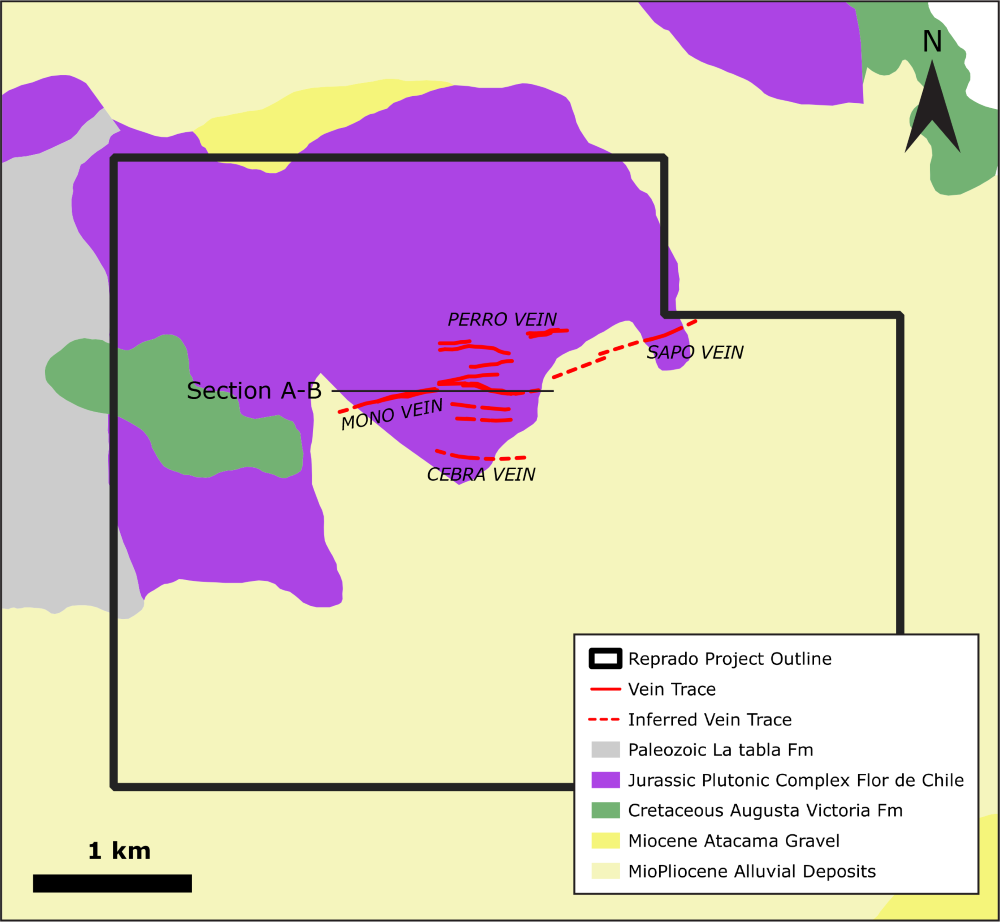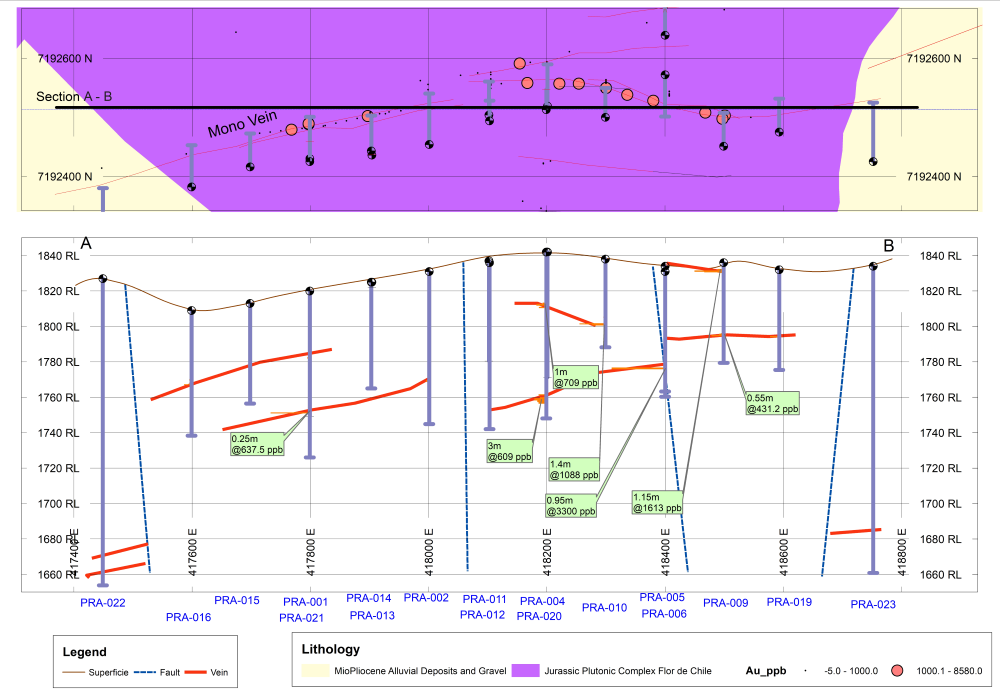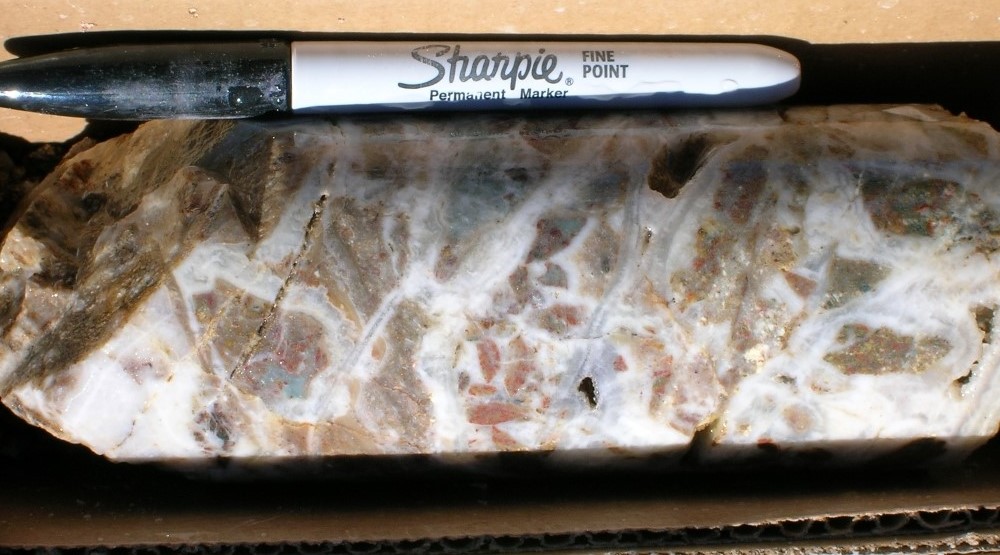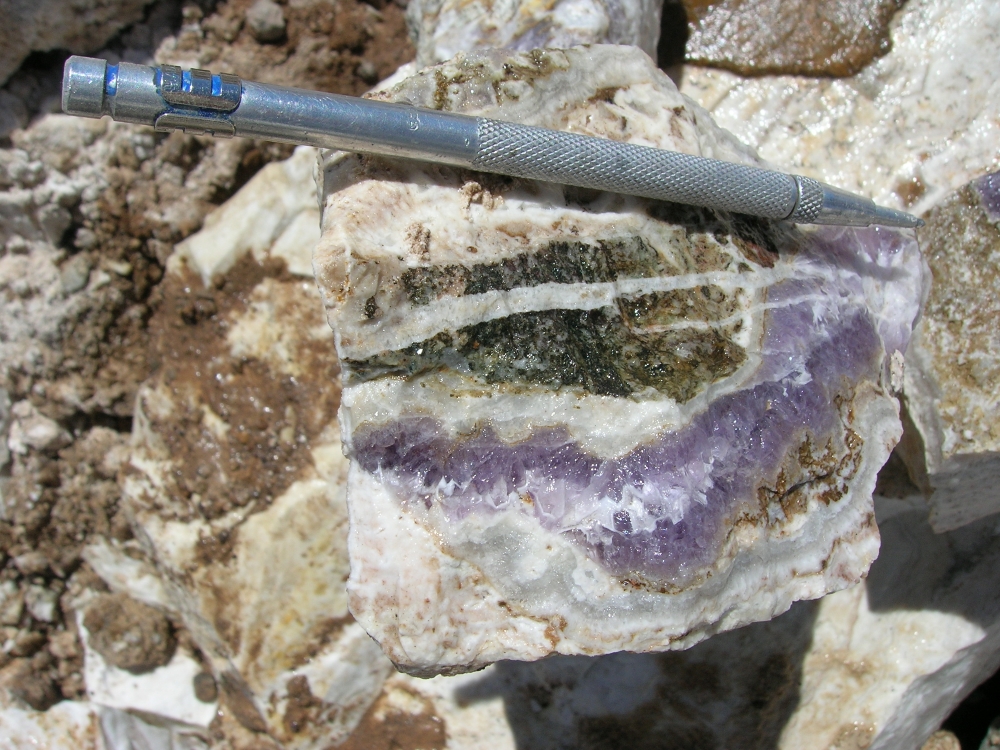Reprado
The Reprado project is located along Chile’s Paleocene Mineral Belt, ~20 km north of the Amancaya Au-Ag mine (LS epithermal) and 42 km southwest of the Guanaco Au-Ag mine (HS epithermal).
Targets on the property include low sulfidation, epithermal quartz veins with Au-Ag mineralization of the El Peñon or Amancaya type. Vein systems have conjugate structural patterns, with ENE and WNW strikes, and are 0.5 m to 4 m in width. Veins exhibit typical colloform and crustiform textures, with amethyst commonly observed. Grab samples of float and sub-cropping veins in trenches and on the surface carry anomalous Au, often up to 1 g/t. The best exposed vein – E-W “Mono Vein” – is 0.5 m to 2 m thick with local sheeted and brecciated vein-veinlet zones extending outwards from its central portion, dips variably steeply south, and is traceable for >1 km. There is significant untested potential along strike, at depth, and under cover.
Reprado was historically explored by Teck Chile (2007), including trenching and shallow drilling. Teck completed 21 diamond drill holes (generally <150m) totaling 1,955m, 4 reverse circulation drill holes (to 200m) totaling 800m, and approximately 25 N-S trenches. Deeper extensions are untested. Surface sampling in trenches contained up to 9.0 g/t Au over 0.8 m and 3.9 g/t Au across the Mono vein over 1.0 m (n=128, avg=0.25 g/t Au), and grab sampling up to 8.6 g/t Au (n=98, avg=0.6 g/t Au). Shallow drilling returned intercepts of 1 m at 3.5 g/t Au and 7.8 g/t Ag (PRA-005 from 81.05 m at the Mono Vein).
EMX acquired the property from Revelo Resources in 2020 (see EMX Press Release dated March 26, 2020).
*Nearby mines and deposits provide context for the project, but do not necessarily indicate similar size, styles or grade of mineralization within the project.
**EMX has not performed sufficient work to verify the historic results, and this data cannot be verified as being compliant with NI43-101 standards, but EMX believes this information is considered reliable and relevant.
***True thickness of drill intercepts is unknown.
Maps
Photos

 Click to Enlarge
Click to Enlarge
 Click to Enlarge
Click to Enlarge
 Click to Enlarge
Click to Enlarge
 Click to Enlarge
Click to Enlarge
 Click to Enlarge
Click to Enlarge